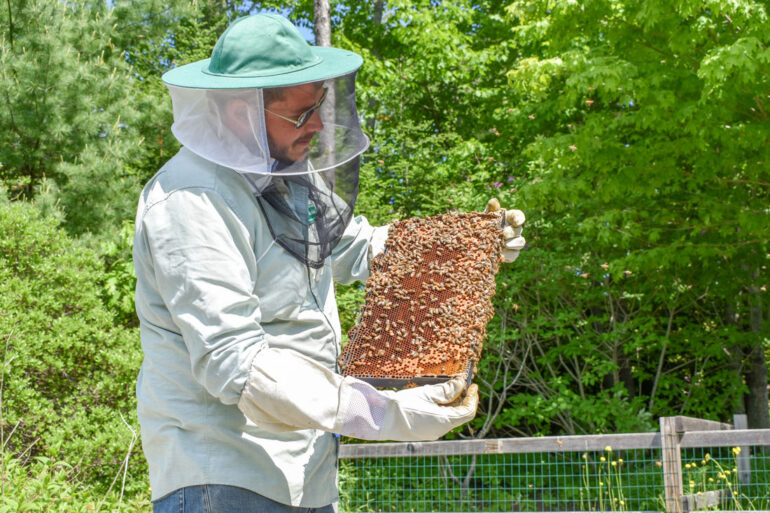 Coastal Maine Botanical Gardens
Coastal Maine Botanical GardensEllsworth native Zac Smith-Hess is an entomologist and educator who taught at schools, zoos, and aquariums around the country before joining the Coastal Maine Botanical Gardens staff in 2022. There, he is responsible for the beehives, helps manage a pollinator habitat garden, and educates visitors on climate change and biodiversity loss.
Why is it important for homeowners to think about the biodiversity of their yards?
Yards are one of the most common ecosystems in the country, and ecologically, lawns aren’t very active. That means there’s a huge chunk of the country that other species can’t use. The more organisms you have in a system, the harder that system is to destroy. By building up biodiversity in areas that we have personal control over, we can make that overall system a lot sturdier in the face of climate change.
How else do people benefit from maintaining a thriving biodiverse yard?
Our agricultural system is heavily reliant on pollinators. By building up habitat for native species, we can help our food systems work a little more securely. It’s also pretty conclusively shown that time outside in natural settings, surrounded by plants and all those little critters that take advantage of them, has a really major impact on mental health. Being out in healthy ecosystems can make a positive difference in how we feel.
What plants support biodiversity?
I like to recommend Asclepias incarnata, the swamp milkweed. It’s native to New England and monarchs love it. I am also a really big fan of joe-pye weeds. There are a couple different species, and they have big, beautiful clusters of blue, purple, or pink flowers that all sorts of creatures love. You can also try what is known as Chaos Gardening, where you get your hands on as many native-species seeds as you can and spread them on your property. They’re not all going to grow everywhere, so you end up with this really diverse landscape with patches of all sorts of different species. That diversity makes an ecosystem much healthier.
Is it important to stagger bloom time when choosing plants?
If you really want to do a habitat garden, you want the longest bloom period possible, which in Maine is a little tricky. Fruit trees are really important for us because they tend to be such early bloomers, and then push as late as you can in the fall with things like asters. The more months you can cover with flowers, the happier everything’s going to be.
What do you recommend to people who don’t have yard space?
Something as simple as a window box outside an apartment can have an appreciable positive impact on the native insects around you. New England aster looks beautiful in a pot, and organisms love it. It’s an incredible pollinator plant, it’s a host plant for some species, and it’s got a really beautiful late-fall bloom.



